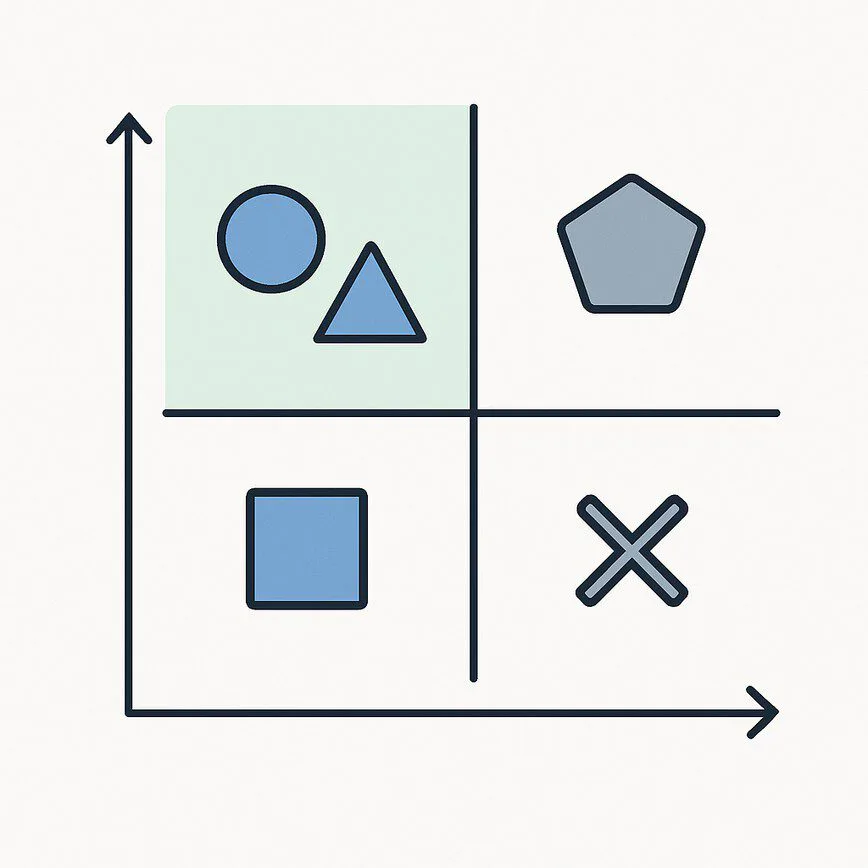Turning a great idea into a successful product rarely happens by accident. It requires a clear plan and a guiding vision. This is where a product development strategy comes in—it’s the foundational blueprint that connects your business goals to your product’s journey from concept to customer. Without one, even the most innovative ideas can:
- Get lost in confusion
- Miss their market window
- Fail to meet customer needs
Table of Contents
Many businesses get bogged down trying to create a document that’s hundreds of pages long. The truth is, a simple, focused strategy is often more powerful. At RenewGenius, our success is built on a clear focus: providing comprehensive knowledge and tools for residential solar solutions. This focused approach allows us to serve our customers effectively, and the same principle applies to your product planning. This guide will walk you through creating a simple yet effective new product development strategy to steer your next project toward success.
What is a Product Development Strategy?
A product development strategy is a high-level plan that outlines how you will create and bring new products to market or improve existing ones. It’s not a detailed project plan or a feature-by-feature roadmap. Instead, it answers the big “why” and “how”:
- Why are we building this product?
- Who is it for?
- How will it achieve our business objectives?
- How does it stand out from the competition?
This strategy acts as a North Star for your entire team, ensuring everyone from engineering to marketing is aligned and moving in the same direction.
Why a Simple Strategy is Your Best Starting Point
In a fast-moving market, agility is key. A complex, rigid strategy can quickly become outdated. A simple strategy, on the other hand, offers several advantages:
- Clarity and Focus: It forces you to prioritize what truly matters, eliminating distractions.
- Faster Implementation: A straightforward plan is easier for your team to understand, adopt, and execute.
- Flexibility: It’s easier to adapt a simple strategy when you receive new market feedback or encounter unexpected challenges.
- Easier Buy-in: A concise and compelling plan is more likely to get the enthusiastic support of stakeholders and investors.
5 Steps to Build Your New Product Development Strategy
Ready to build your plan? Follow these five essential steps to create a robust and actionable strategy.
Step 1: Define Your Vision and Goals
Before you think about features, you need to define success. What is the overarching vision for this product? This should be tied directly to your company’s mission. For example, our vision at RenewGenius is to empower homeowners to make confident decisions about solar energy.
From this vision, set specific, measurable goals. Are you trying to:
- Enter a new market segment?
- Increase market share by 15%?
- Achieve a specific revenue target?
- Improve customer retention?
Your goals will be the benchmarks against which you measure the product’s ultimate success.
Step 2: Understand Your Target Market and Competition
You can’t build a successful product in a vacuum. This step involves deep-diving into market research. A core component of this is your market development strategy—how you will introduce your product to a specific audience.
- Identify Your Customer: Who are you building this for? Create detailed user personas. What are their pain points, needs, and motivations?
- Analyze the Competition: Who are the key players? What are their strengths and weaknesses? Where are the gaps in the market that your product can fill?
- Assess Market Viability: Is the market large enough? Is it growing? What external factors (economic, technological, regulatory) could impact your product?
Step 3: Ideate and Prioritize Your Concepts
With a clear understanding of your goals and market, it’s time for brainstorming. Generate as many ideas as possible that could solve your target customer’s problems.
Once you have a list of potential product concepts or key features, you need to prioritize them. Use a simple framework like a value vs. effort matrix to identify the ideas that offer the most customer value for the least amount of development effort. This is where you begin to see the shape of your Minimum Viable Product (MVP).

Step 4: Outline Your Development and Launch Plan
This is where your strategy begins to connect with execution. You don’t need a minute-by-minute project plan here, but you should outline the key phases.
- Key Initiatives: What are the major streams of work? (e.g., Prototyping, User Testing, Core Technology Build, Marketing Campaign).
- High-Level Timeline: What are the target milestones for each phase?
- Resource Allocation: What budget, team members, and tools will be required?
Step 5: Establish Metrics for Success
How will you know if your strategy is working? Defining your Key Performance Indicators (KPIs) upfront is crucial. These should link back to the goals you set in Step 1.
- Pre-Launch Metrics: User engagement with prototypes, feedback scores.
- Post-Launch Metrics: Customer acquisition cost (CAC), adoption rate, user retention, and, critically, Return on Investment (ROI).
Just as we provide homeowners with an ROI calculator to help them make informed decisions, you must build a way to calculate your product’s financial return to the business.
Integrating Your Strategy with the Broader Business

A great product development strategy doesn’t exist in isolation. It must be aligned with your company’s overall business strategy and integrated into your operational workflows. This means clearly communicating the plan to all departments and ensuring that the high-level strategic initiatives are broken down into actionable tasks. This is the point where your strategy transforms into a tangible project. Understanding the complete product development process is essential for translating your strategic vision into a market-ready reality, covering everything from initial research to final manufacturing.
From Strategy to Reality: Your Next Steps
Creating a simple product development strategy is your first and most important step toward innovation. By defining your vision, understanding your market, prioritizing ideas, outlining your plan, and setting clear metrics, you create a powerful guide for your team.
At RenewGenius, our foundation is a comprehensive solar knowledge base that empowers our customers. Your product strategy should serve the same purpose for your team—empowering them with the clarity and confidence needed to build something truly remarkable. Start simple, stay focused, and get ready to bring your next great idea to life.

